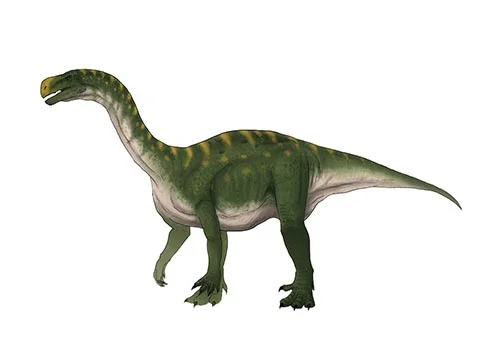Jaxartosaurus (Jaxartes lizard - after the Jaxartes River)

Jax-art-o-sore-us
Anatoly Nikolaenvich Riabinin - 1938
Herbivore
Estimated 8 meters long
Euornithopod
J. aralensis (type)
China. Kazakhstan
Late Cretaceous, 85-70 million years ago
Jaxartosaurus Facts
Jaxartosaurus, also known as the “Jaxartes lizard,” was a genus of hadrosaurid dinosaur that lived in what is now Kazakhstan during the Late Cretaceous period, about 85 to 70 million years ago. It was named after the Jaxartes River, which flows through the region where the first fossils of the dinosaur were discovered.
Jaxartosaurus was a relatively large dinosaur, estimated to have been about 8 meters (26 feet) long and weighing around 2,500 kilograms (2.8 short tons). It had a flat, duck-like beak and hundreds of closely spaced teeth that it used to grind up tough plant material. Like other hadrosaurids, Jaxartosaurus was a quadrupedal herbivore that likely lived in herds and had a complex social structure.
Jaxartosaurus is known from several partial skeletons, including a particularly well-preserved specimen that includes a complete skull. This skull is relatively large and robust, with a wide, flat snout and a tall crest on the back of the head. This crest may have served as a resonating chamber, allowing the dinosaur to produce loud calls or honks to communicate with other members of its species.
Jaxartosaurus lived in a region that was characterized by a semi-arid climate with seasonal rainfall. Its environment was dominated by river systems and broad floodplains, with abundant vegetation that included conifers, ferns, and flowering plants. The dinosaur was likely preyed upon by large predators such as Tarbosaurus, a close relative of Tyrannosaurus rex that lived in the same region.
Jaxartosaurus is an important dinosaur because it helps paleontologists better understand the diversity and distribution of hadrosaurid dinosaurs during the Late Cretaceous period. The discovery of this dinosaur and other fossils from the same region have shed light on the ancient ecosystems of Central Asia, and have provided valuable information about the evolution and biology of these fascinating animals.



